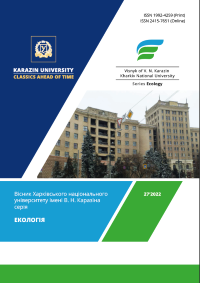Національна геопросторова інформаційна система у містобудуванні
Анотація
Теоретично обґрунтовані питання щодо формування програмного забезпечення, формування ГІС-середовища та апаратного забезпечення; всіх існуючих критеріїв; запропонований процес оцінювання проектованої інформаційної системи. Обговорені методи, що пов’язані з практичним дослідженням та оцінкою можливості використання просторової інформаційної системи при участі та розробці вимог як інструменту підтримки планування містобудування в муніципалітеті. Продемонстровані результати статистичного аналізу разом із інтерпретаціями на основі статистики, особливо кореляції Спірмена. На практиці доведено, що використання програмного забезпечення, математичного та статистичного аналізу є причиною підвищення економічного стандарту разом із врахуванням фактору часу, які дуже необхідні для покращення ГІС.
Через оманливу природу питання часу, бо ним неможливо керувати, і люди не повинні турбуватися про управління часом, оскільки вони втрачають увагу. Необхідно бути зосередженими на конкретному моменті і тільки так можна ефективно використовувати час і продовжувати необхідну діяльність. Нарешті, шляхом програмування та створення механізму спільного прийняття рішень в асинхронних і синхронних середовищах, представлено в організаційній формі національної геопросторової інформаційної системі (NPGIS).
##submission.downloads##
Опубліковано
Номер
Розділ
Ліцензія
Авторське право (c) 2022 Fallah M., Karami T., Kojouri M. K.,

Ця робота ліцензується відповідно до Creative Commons Attribution 4.0 International License.
Автори, які публікуються у цьому журналі, погоджуються з наступними умовами:
- Автори залишають за собою право на авторство своєї роботи та передають журналу право першої публікації цієї роботи на умовах ліцензії Creative Commons Attribution License 4.0 International (CC BY 4.0), котра дозволяє іншим особам вільно розповсюджувати опубліковану роботу з обов'язковим посиланням на авторів оригінальної роботи та першу публікацію роботи у цьому журналі.
- Автори мають право укладати самостійні додаткові угоди щодо неексклюзивного розповсюдження роботи у тому вигляді, в якому вона була опублікована цим журналом (наприклад, розміщувати роботу в електронному сховищі установи або публікувати у складі монографії), за умови збереження посилання на першу публікацію роботи у цьому журналі.
- Політика журналу дозволяє і заохочує розміщення авторами в мережі Інтернет (наприклад, у сховищах установ або на особистих веб-сайтах) рукопису роботи, як до подання цього рукопису до редакції, так і під час його редакційного опрацювання, оскільки це сприяє виникненню продуктивної наукової дискусії та позитивно позначається на оперативності та динаміці цитування опублікованої роботи (див. The Effect of Open Access).

